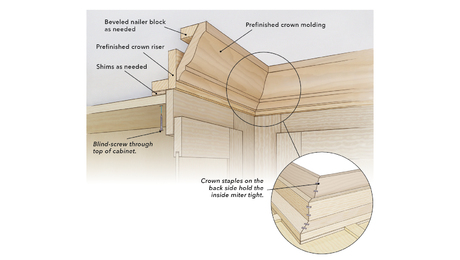What are the rules for collar ties?
I’m building a small hip-roofed screened pavillion that will be 16 X 16 with 2-foot eaves. I want it to open all the way to the hip rafters in the center of the ceiling. The construction will be 6 X 6 pt posts every 4 feet oc with a 4 X 10 header let in all around the perimeter.
Do I need collar ties? My instinct says yes but I’ve not seen this in any of the photos I’ve looked at.
Thanks, NCtim



















Replies
no
First - are you falling victim to the common misunderstanding that a rafter tie is a collar tie?
Collar ties are used in the upper third of the roof frame about ever four feet to resist upward hinging in a violent wind that can take the ridge apart other wise. Code required in some southern tornado prone states
Rafter ties are used in the lower third of the rafter and resist outward thrust of gravity on the walls. For your structure, it is possible to do without them, but the hips should be stout enough to handle the laods. There is no ridge in a square hipped building, so the load that would normally be carried by a ridge or resisted by rafter ties is going to be transferred to the corner posts, so all your connections there will have a lot ofshear on them
Welcome to the
Taunton University of Knowledge FHB Campus at Breaktime.
where ...
Excellence is its own reward!
Thanks. I appreciate everyones' input. I guess what I originally meant was rafter ties because they wouldn't really be collar ties. I was hoping you all would say I didn't need them because of the visual distraction. That and the span is small so I didn't think I needed them. Our building code here in NC isn't very clear on this issue, I can interpret it just about anyway I want on this issue.
NCtim
I think that the top plates of the wall are the rafter ties so you should make all of the connections from hip to hip strong including hip to plate
wyatt
Ditto what Piffin said.
But check your local codes - You never know what they might say.
It depends on how you do your engineering and your detailing.
Each side of a hip roof constrains the other sides so you don't need ties to hold the upper section together.
The plates at the top of the posts and the plywood hold the lower section together.
This was engineered in a public building, but it seems to prove that it can be done. Certainly does look good.
View Image
Remodeling Contractor just outside the Glass City.
Quittin' Time